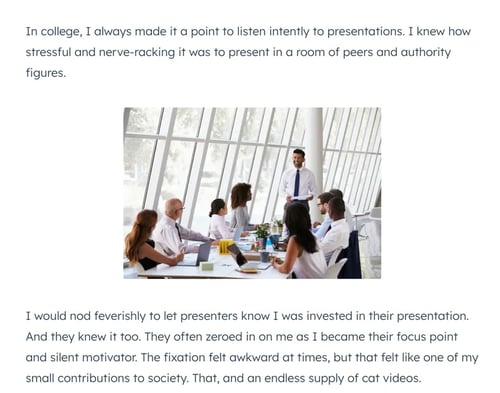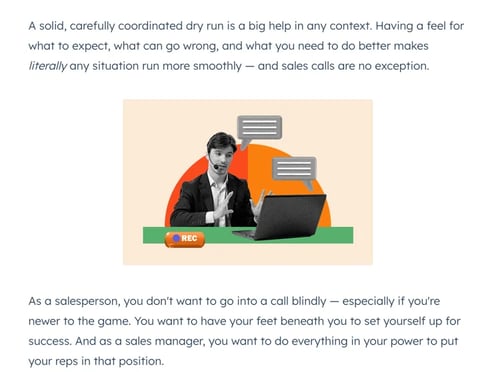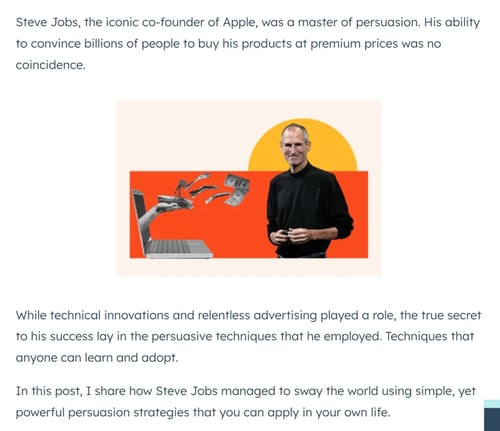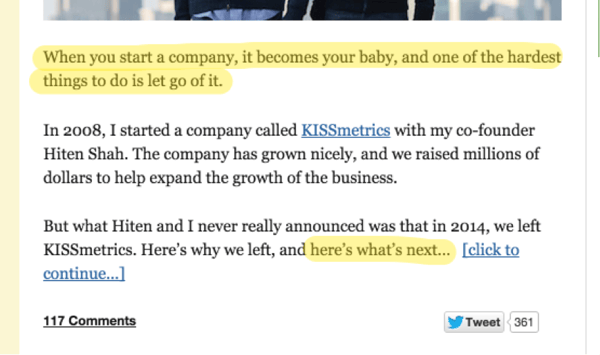Blog Detail Page
3 Essential keys to writing powerful introductions
admin
Home Tutors

OXFORD TUTORS
How to Write an Introduction

An introduction for an essay or research paper is the first paragraph, which explains the topic and prepares the reader for the rest of the work. Because it’s responsible for both the reader’s first impression and setting the stage for the rest of the work, the introduction paragraph is arguably the most important paragraph in the work.
Knowing how to write an introduction paragraph is a great skill, not just for writers, but for students and researchers as well. Here, we explain everything you need to know to write the best introduction, such as what to include and a step-by-step process, with some introduction paragraph examples.
What is an introduction?
Your introduction is a way of preparing your reader for your paper. As the first paragraph of your writing, it makes the first impression and sets the reader’s expectations for tone, voice, and writing style. More importantly, your introduction provides the necessary background for your reader to understand your paper’s purpose and key points.
The introduction is also a way to engage and captivate your reader. An interesting, thought-provoking, or generally entertaining introduction makes your reader excited to keep reading—and an eager reader is an attentive reader.
What to include in an introduction
Introductions generally follow the writing style of the author and the format for the type of paper—for example, opening with a joke is appropriate for some essays, but not research papers. However, no matter what your writing style is or what kind of paper you’re writing, a good introduction includes at least three parts:
- A hook to capture the reader’s attention
- Background for context
- A clearly defined thesis statement or main point of your paper
How to write a hook
The hook refers to anything that grabs (or “hooks”) your reader’s attention and makes them interested. This could be a mystery, such as posing a question and only answering it at the end of your paper. Or it could be a shocking statistic, something that makes your reader rethink what they thought they knew and become curious for more information.
Hooks can be even more creative. Some papers start with an analogy or parable to present complicated topics in a way that someone with little experience can understand. Likewise, many writers opt to use personal anecdotes to show a more human side and spark an emotional connection with the reader.
When all else fails, you can use a poignant quote. If you’re having trouble putting your thoughts into words, maybe one of the great minds from history has already said it well.
You can read all about how to write a hook here, including more detailed instructions and examples.
How to add background information
Not every paper requires background knowledge, but sometimes your reader needs to catch up or understand the context before you make your original points.
If you’re writing about something factual, such as a scientific or historical paper, you may need to provide a small lesson on the basics. For example, if you’re writing about the conflict between ancient Egypt and Nubia, you might want to establish the time period and where each party was located geographically.
Just don’t give too much away in the introduction. In general, introductions should be short. If your topic requires extensive background to understand, it’s best to dedicate a few paragraphs to this after the introduction.
How to write a thesis statement
Every good introduction needs a thesis statement, a sentence that plainly and concisely explains the main topic. Thesis statements are often just a brief summary of your entire paper, including your argument or point of view for personal essays. For example, if your paper is about whether viewing violent cartoons impacts real-life violence, your thesis statement could be:
Despite the rhetoric and finger-pointing, no evidence has connected live-action role-play violence with real-world violence, but there is plenty of evidence for exoneration, as I explain here.
Learning to write a good thesis statement is an essential writing skill, both in college and the world of work, so it’s worth taking the time to learn. The rule of thumb for thesis statements is not to give everything away all at once. Thesis statements, and more broadly introductions, should be short and to the point, so save the details for the rest of the paper.
How to write an introduction paragraph in 6 steps
1 Decide on the overall tone and formality of your paper
Often what you’re writing determines the style: The guidelines for how to write an introduction for a report are different from those for how to write an English essay introduction. Even the different types of essays have their own limitations; for example, slang might be acceptable for a personal essay, but not a serious argumentative essay.
Don’t force yourself to write in a style that’s uncomfortable to you. If you’re not good at making jokes, you don’t need to. As long as your writing is interesting and your points are clear, your readers won’t mind.
2 Write your thesis statement
At the beginning of writing a paper, even before writing the research paper outline, you should know what your thesis is. If you haven’t already, now is the time to put that thesis into words by writing your thesis statement.
Thesis statements are just one sentence, but they are usually the most important sentence in your entire work. When your thesis is clearly defined, your readers will often use it as an anchor to understand the rest of the writing.
The key to writing a good thesis statement is knowing what to ignore. Your thesis statement should be an overview, not an outline. Save the details, evidence, and personal opinions for the body of the paper.
If you’re still having trouble, ask yourself how you’d explain this topic to a child. When you’re forced to use small words and simplify complex ideas, your writing comes across more clearly and is easier to understand. This technique also helps you know which details are necessary up front and which can wait until later.
3 Consider what background information your reader needs
Don’t take your own experience for granted. By this point in the writing process, you’ve probably already finished your research, which means you’re somewhat of an expert on the topic. Think back to what it was like before you learned: What did you wish you had known then?
Even if your topic is abstract, such as an ethical debate, consider including some context on the debate itself. How long has the ethical debate been happening? Was there a specific event that started it? Information like this can help set the scene so your reader doesn’t feel like they’re missing something.
4 Think of a good hook
Writing a hook can be the most difficult part of writing an introduction because it calls for some creativity. While the rest of your paper might be presenting fact after fact, the hook in your introduction often requires creating something from nothing.
Luckily, there are already plenty of tried-and-true strategies for how to start an essay. If you’re not feeling very creative, you can use a method that’s already been proven effective.
Just remember that the best hooks create an emotional connection—which emotion is up to you and your topic.
5 Write a rough draft of your introduction without pressure
It’s normal to clam up when writing a rough draft of your introduction. After all, the introduction always comes first, so it’s the first thing you write when you finally begin.
As explained in our guide to writing a rough draft, the best advice is not to pressure yourself. It’s OK to write something that’s messy—that’s what makes this draft rough. The idea here is to get words on paper that make your point. They don’t have to be the perfect words; that’s what revisions are for.
At the beginning, just worry about saying what needs to be said. Get down your hook and thesis statement, and background information if necessary, without worrying about how it sounds. You’ll be able to fix the problems later.
6 Revise your introduction after you’ve written your whole paper.
We recommend finishing the first draft of your entire paper before revising the introduction. You may make some changes in your paper’s structure when writing the first draft, and those changes should be reflected in the introduction.
After the first draft, it’s easier to focus on minutiae like word choice and sentence structure, not to mention finding spelling and grammar mistakes.
Introduction for an essay example
While other kids’ memories of circuses are happy and fun, what I recall most from my first time at a circus was feeling sorry for the animals—I can still remember the sadness in their eyes. [HOOK] Although animal rights in the circus have come a long way, their treatment of animals even under the new laws is still cruelty plain and simple. [BACKGROUND] The way circuses abuse animals needs to be abolished immediately, and we need to entirely rethink the way we use animals for entertainment. [THESIS STATEMENT]
Introduction FAQs
What is an introduction?
An introduction is the first paragraph in an essay or research paper. It prepares the reader for what follows.
What’s the purpose of an introduction?
The goal of the introduction is to both provide the necessary context for the topic so the reader can follow along and also create an emotional connection so the reader wants to keep reading.
What should an introduction include?
An introduction should include three things: a hook to interest the reader, some background on the topic so the reader can understand it, and a thesis statement that clearly and quickly summarizes your main point.
How to Write a Good Introduction Sentence
- Keep it short.
- Say something unexpected.
- Don’t repeat the title.
- Use the word “you” at least once.
- Tell readers what's coming next.
- Explain why the article is important.
- Refer to a concern or problem your readers might have.
- Be careful telling stories.
- Use a stat or a fact to convey urgency.
1. Keep it short.

I’m a big fan of short sentences. I love them because people can understand them easily. There's great value in short sentences that are readable, digestible, and punchy.
Writers often get caught up in the pressure of a good intro that they deliver long, run-on sentences. The problem with these sentences is that it makes readers work hard, which isn’t a great incentive to keep reading.
While the length of an introduction can vary, it’s best to aim for brevity with up to three short paragraphs. Using AI tools like our Paragraph Rewriter tool can help make your paragraphs more impactful and concise.
Readers are impatient to get to the meat of the article so don't bury the lede deep in your article – cut to the chase.
2. Say something unexpected.
You've probably heard advice like "Create a hook" and "Grab the reader's attention." But what kind of stuff actually grabs someone's attention?

Here are some great options:
- Personal stories
- Questions
- Data
- Scene setting, e.g. “Imagine…”
Think about it – your reader has already clicked on the headline. So, they’re interested in your topic. But now, you have to reel them in a little further.
If your very first sentence is interesting enough to make people want to read the next one, then you've done a good job.
3. Don’t repeat the title.
You only have a few seconds to make a strong impression in your intro. It’s a wasted opportunity to repeat your headline.
Instead, take advantage of your chance to reinforce that title and to set the stage for the article and the value it will bring.
4. Use the word “you” at least once.

The word “you” is a powerful word.
It tells the reader that you, the author, are writing the article with them in mind. You empathize with them, you care about them, and you want your piece to resonate with them.
It's a simple trick that establishes a crucial connection with your reader.
5. Tell readers what's coming next.
What will you be covering? What will the reader learn? How will this help them? These are all questions you should answer in your intro.

This sets the reader's expectations and helps them navigate your article. They might just jump to the section they’re most interested in or read the whole thing. For example:
- “You’re about to find out why sea turtles always lay their eggs on the beach.”
- “And, if you’ve ever wondered why sea turtles lay their eggs on the beach, here's everything you need to know.”
- “This article explains the 17 reasons why these amazing creatures lay their eggs on beaches.”
- “Fascinating, funny, and shocking, these are the reasons why sea creatures lay their eggs on the beach.”
6. Explain why the article is important.
It may be obvious to you why your article is important to your readers, but it’s up to you to emphasize its value and put it in context.
For instance, say you’re writing an article about TikTok written for a marketing audience. You could lead with a surprising TikTok stat about its user base. Here’s an example:
“In the past two years, TikTok’s user base has grown by 15% while other platforms are seeing stagnant or declining engagement. This suggests that marketers may want to pay more attention to this short-form video platform.”
In two sentences, you’ve presented an interesting tidbit and explained why it matters.
Take the introduction to this article, you'll recall the following sentence: “And if you don't do it well, you're missing out on potential subscribers, leads, and customers.”
My goal here was to connect the topic of blog post introductions to a business’ bottom line.
7. Refer to a concern or problem your readers might have.
Everyone in every field has their set of problems. You should have some listed already from when you created your buyer personas. Communicate your awareness of those problems in your introduction and you're more likely to gain a sympathetic reader.
good introduction sentence example - refer to a concern
People want to solve their problems, and articles that explain how to do this will help you earn readership.
8. Be careful telling stories.
A lot of people will tell you that you need to write a story in the introduction. Stories can work, as in the example above, but there are good and bad ways to tell stories in your intro.
Do use storytelling to spark the reader's curiosity and empathize with her. But don't get carried away and write a long-winded story that loses readers along the way.
Remember the tip about keeping introductions short? That still applies when you're telling a story. Here's an example from one of my own QuickSprout blog posts:

Notice that I highlighted the "empathy" section in the first sentence. Here, I helped form a connection with my readers. Then, I told a short story about my own experience. After that, I finished the introduction with what's next.
If you do begin your article with a story, here's a tip: Don't reveal the conclusion until the reader is deeper into the article, or even until the very end.
9. Use a stat or a fact to convey urgency.
When journalists begin a news story, they often give readers an eye-catching stat or fact about what's going on.

As a blogger or any type of writer, a really interesting stat or fact will draw your reader in and show them why your topic is really important.
For example, say you're a plumber writing a blog post on pipe replacement. You might pull in more readers if you start a post by explaining how frequently old pipes burst in the winter.
If readers see that this is a common issue that others face, they might keep reading to learn how they can avoid it.
Introduction Takeaways
The next time you write an article introduction, think about what kind of introduction would make you want to read the article.
To compel you to read past the introduction of an article, you want to read something unique, fresh, and engaging. You want to hear about yourself and your problems, making the article a must-read to help solve them.
Introductions are hard, and writing effective ones takes time and practice. But remember, it's all worth it if it means keeping the attention of a few more of your readers.
Related Blogs
Categories
-
Home Tutors
279
Recent Blgs

online tutoring Australia

home tuition in lahore

home tutors in Lahore
Tag Cloud
x2
tuition
tutoring
tutor
home tuition
home tutoring
tuition teacher near me
maths tutoring
physics tutoring
chemistry tutoring
kids learning centre
home tutoring agency
tuition agency
female home tutors near me
female home tutors near my home
female home tutors near my location
O level tutor
A level tutor
tutoring service
home tutoring service
kindergarten tutors
home tuition agency


















































































































































































































































































